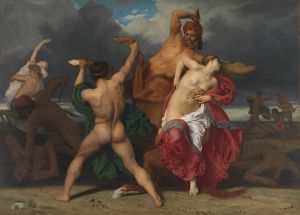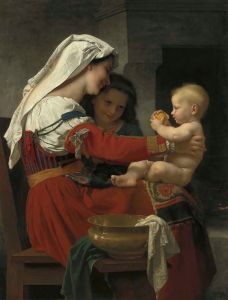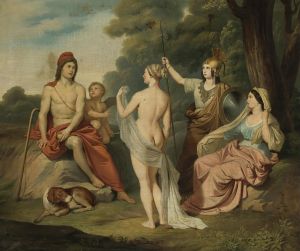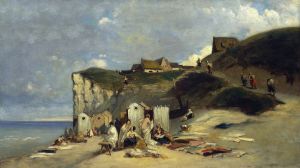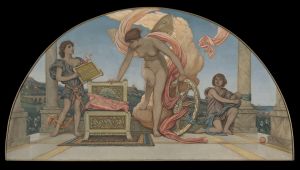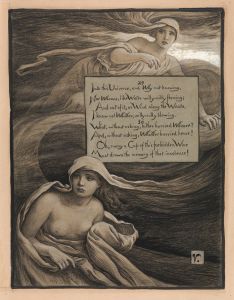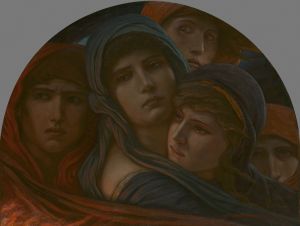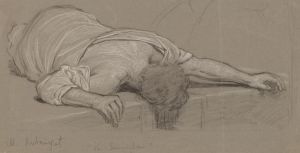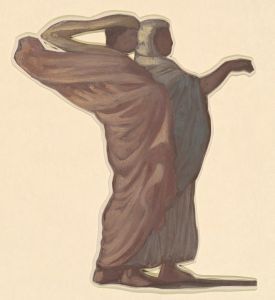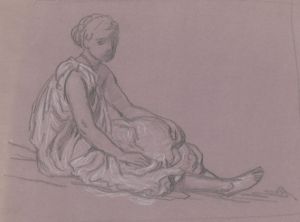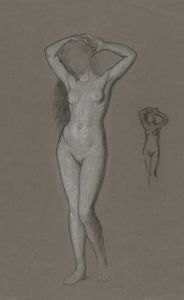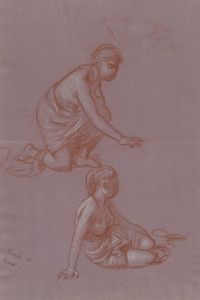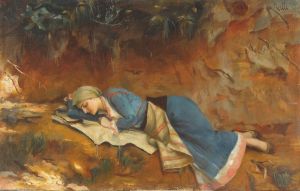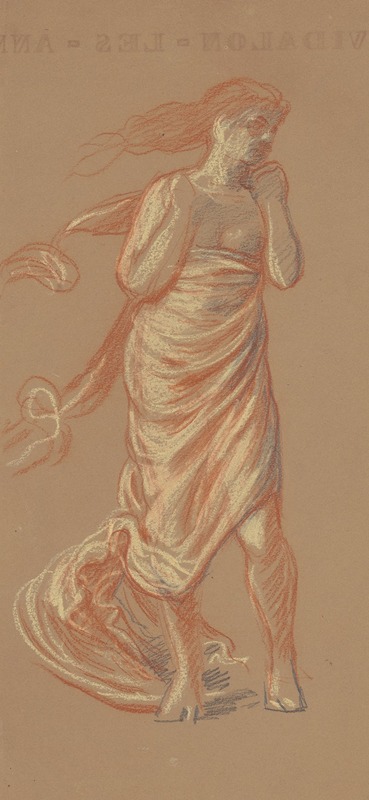
Study for ‘Greek Girls Bathing’
A hand-painted replica of Elihu Vedder’s masterpiece Study for ‘Greek Girls Bathing’, meticulously crafted by professional artists to capture the true essence of the original. Each piece is created with museum-quality canvas and rare mineral pigments, carefully painted by experienced artists with delicate brushstrokes and rich, layered colors to perfectly recreate the texture of the original artwork. Unlike machine-printed reproductions, this hand-painted version brings the painting to life, infused with the artist’s emotions and skill in every stroke. Whether for personal collection or home decoration, it instantly elevates the artistic atmosphere of any space.
Elihu Vedder's Study for ‘Greek Girls Bathing’ is a preparatory work created by the American symbolist painter Elihu Vedder (1836–1923). Vedder, known for his mystical and allegorical themes, often explored classical and mythological subjects in his art. This particular study reflects his interest in ancient Greek culture and aesthetics, which were popular themes during the 19th century due to the influence of Neoclassicism and the Romantic movement.
The artwork is a study, meaning it was likely created as a preliminary exploration for a larger or more finished composition. Studies were commonly used by artists to experiment with composition, figure placement, and other visual elements before committing to a final piece. In Study for ‘Greek Girls Bathing’, Vedder depicts a group of female figures, presumably Greek women, engaged in the act of bathing. The scene is characterized by its focus on the human form and its connection to nature, a recurring motif in Vedder's work.
Vedder spent much of his career in Italy, where he was influenced by the classical ruins, Renaissance art, and the Mediterranean landscape. These influences are evident in his works, including this study, which demonstrates his fascination with the idealized human figure and the timeless beauty of classical themes. The study showcases Vedder's skill in rendering anatomy and his ability to evoke a sense of tranquility and harmony.
The medium and dimensions of the study are not widely documented, but it is likely that Vedder used traditional materials such as pencil, charcoal, or ink on paper, as was common for preparatory works during his time. The exact date of the study is also unclear, though it would have been created during the height of Vedder's career in the late 19th century.
While the final version of Greek Girls Bathing is not widely known or may not have been completed, this study remains a testament to Vedder's artistic process and his engagement with classical themes. Today, Vedder is best remembered for his illustrations for The Rubáiyát of Omar Khayyám and his contributions to the American symbolist movement. His works, including preparatory studies like this one, are held in various collections and continue to be studied for their unique blend of symbolism, mysticism, and classical influence.





